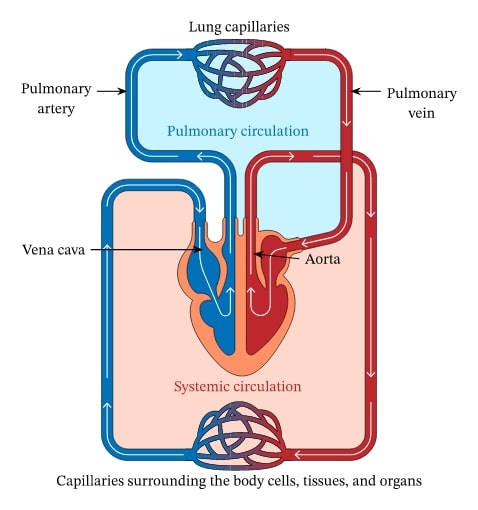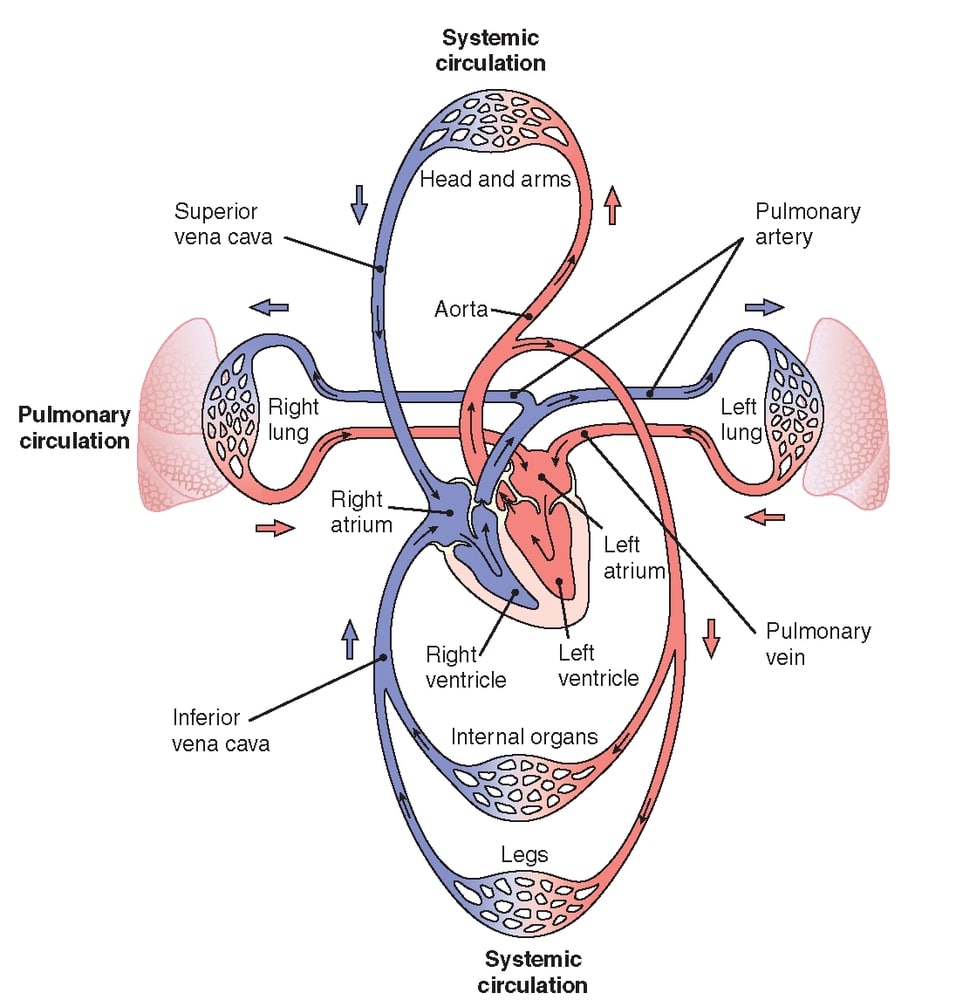The circulatory system is an organ system that is responsible for circulating body fluid throughout the entire body of an organism. The human circulatory system is made up of blood vessels, the heart, and blood. In such a type of circulatory system, blood passes through the heart twice in each circuit and hence, it is known as ‘double circulation‘.

This article will help you understand the main concepts of double circulation and how blood is transported in human beings.
Index
What is a Circulatory System?
The circulatory system is an organ system that transports the main body fluid throughout the entire body. By transporting the body fluid, it indirectly transports oxygen, nutrients, and hormones throughout the body’s various organs. The organs that make up the circulatory system are:
- Heart
- Blood vessels
- Blood
- Lymph
- Lymph vessels.
Also Read: Difference Between Blood and Lymph
Why is the circulation in humans called double circulation?
The human circulatory system is called a double circulatory system because blood passes through the heart twice per circuit. This process occurs as:
- The right pump transports deoxygenated blood to the lungs. Once it reaches the lungs, it is oxygenated and then it returns back to the heart.
- The left pump transports the fresh oxygenated blood around the body. As the blood gets deoxygenated again in the tissues, returns to the heart for oxygenation.
How does Double Circulation happen in human beings?
The human circulatory system can be divided into two parts namely:
- Systemic circuit
- Pulmonary circuit
These two circuits are well separated by a membrane to prevent the mixing of oxygenated and deoxygenated blood. Each circuit passes through the heart twice.
- Pulmonary Circuit: It is made up of the heart and lungs. In this circuit, the deoxygenated blood is transported to the lungs through the pulmonary artery, and that deoxygenated blood travels from the right auricle of the heart to the right ventricle and the pulmonary artery. In this circuit, the carbon dioxide is removed and blood gets oxygenated which is carried to the left auricle by the pulmonary vein.
- Systemic Circuit: All systemic organs and tissues are involved in this type of circulation. In this circuit, the oxygenated blood is transported to the tissues and organs through the aorta which then becomes deoxygenated. This deoxygenated blood is now carried by the Vena Cava to the right auricle and subsequently to the right ventricle.

Both the cycle repeats and this is how blood enters twice the heart and escapes twice out of the heart in the whole process. Therefore, it is known as double circulation.
What makes Double Circulation advantageous?
Double circulation is a highly evolved system and is significant for human beings. Following are its advantages
- It makes it possible for maintaining higher blood pressure in the body.
- It generates a greater flow of blood to the tissues.
- A separation of oxygenated and deoxygenated blood is possible and there is no mixing of Oxygenated and deoxygenated blood.
- It helps in producing a large amount of energy to maintain life processes.
FAQs
The blood vessels that are involved in double circulation are the pulmonary artery, aorta, pulmonary vein, and Vena Cava.
In single circulation, blood flows to and from the heart through a single pathway, whereas in double circulation there are two separate pathways that are connected to the heart through which oxygenated and deoxygenated blood flows.
